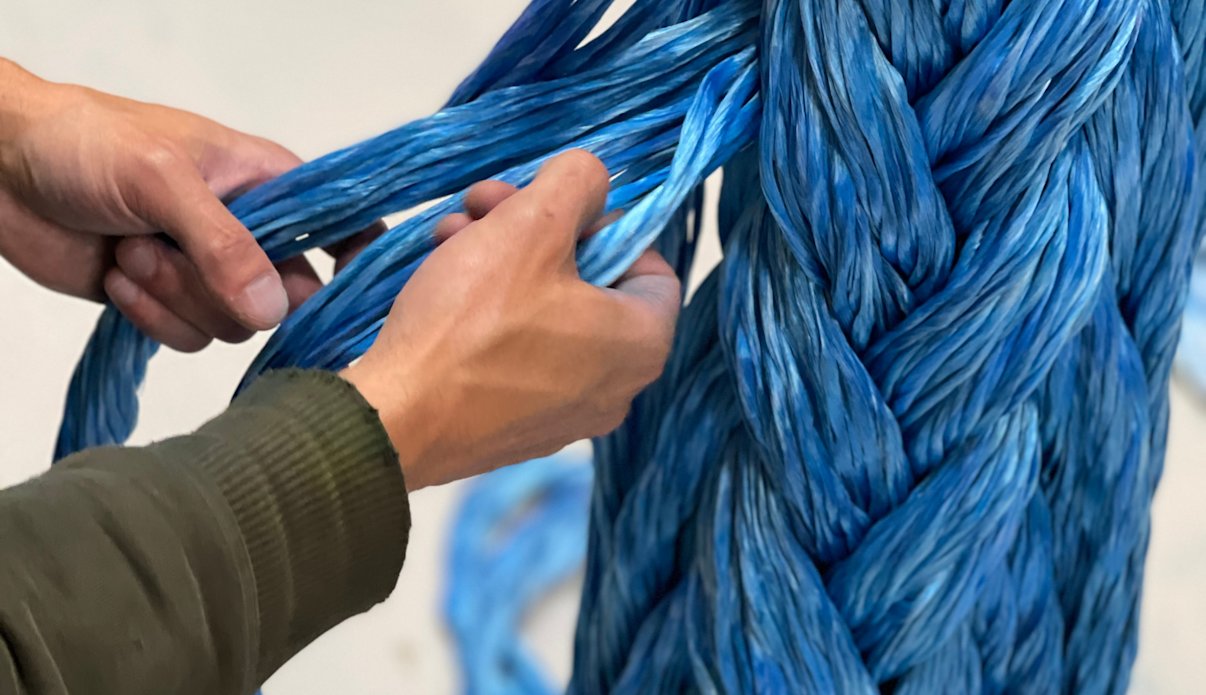- Dynamica Ropes
- Know-how
Know-How Academy
Learn more about ropes, slings, tethers and winch ropes here at our Know-How Academy.
Here you find information about industry terms, constructions, splicing, fibre specifications and much more!
Are you perhaps more interested in the answers to the most frequently asked questions - read more here!
Material
At Dynamica Ropes, we specialise in HMPE more specifically Dyneema®.
We manufacture with HMPE/Dyneema® fibre as they are light, strong, have low elongation and density (0.98).
On request we also manufacture with polyester, nylon and Danline PLUS. These fibres do not have the same strength, low weight and abrasion resistance. However, they are a price friendly alternative and, in some cases, the higher elongation is preferred.
Read more about HMPE/Dyneema® here.
Heat setting and heat stretching
Heat setting and heat stretching are two distinct processes used in our Dyneema® rope manufacturing.
Heat setting involves applying controlled heat to stabilise the fibres and crosslink the impregnation, ensuring the rope retains its intended form under tension and load.
Heat stretching entails adding tension while subjecting the rope to controlled heat. This is done to align its fibres, reducing constructional elongation and enhancing strength under load. Both processes are crucial for producing ropes that perform reliably under heavy load.
Splicing
At Dynamica Ropes, we use the Dynamica Splice as our preferred method. The splice method and the experience and skill of the rigger have a direct impact on how much BS (breaking strength) is lost. By using the Dynamica Splice we only lose 10 % of the original BS, whereas a less experienced rigger can lose up to 75 %.
BS, MBL & WLL
BS (breaking strength), MBL (minimum breaking load) and WLL (working load limit) all describe the strength of the equipment.
BS is the load at which the equipment breaks.
MBL is the minimum load at which there is risk that the equipment breaks.
WLL is the maximum load that the equipment must be exposed to during service. Previously, the used term for this was SWL (safe working load), but this was replaced as the term ‘safe’ caused legal troubles.
Length & EWL
Length and EWL (effective working length) are two terms used interchangeable. Effective working length however, is predominantly used within lifting and describes the length between the load bearing points of an unloaded sling.
SF: the relation between MBL & WLL
SF (safety factor) is the relation between MBL (minimum breaking load) and WLL (working load limit). The preferred SF can differ from country to country and industry to industry. As default, our SF is 7:1 but on request this can be lowered or heightened.
